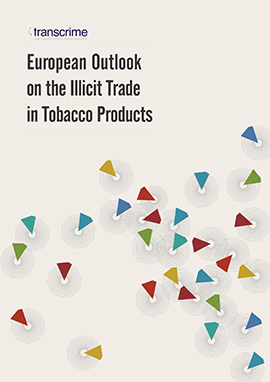
Alberto Aziani
Sara Banfi
Francesco Calderoni
Stefano Caneppele
Marco De Simoni
Fiammetta Di Stefano
Marco Dugato
Serena Favarin
Lorella Garofalo
Marina Mancuso
Serena Oliva
Martina Rotondi
Pamela Scarati
Elisa Superchi
European Outlook on the Illicit Trade in Tobacco Products
Alberto Aziani
Sara Banfi
Francesco Calderoni
Stefano Caneppele
Marco De Simoni
Fiammetta Di Stefano
Marco Dugato
Serena Favarin
Lorella Garofalo
Marina Mancuso
Serena Oliva
Martina Rotondi
Pamela Scarati
Elisa Superchi
This study has been coordinated by Ernesto U. Savona.
This study calls for a new direction to be taken in the analysis of, and the fight against, the illicit trade in tobacco products (ITTP) in the European Union (EU). It suggests that the focus should be trained more closely on the reduction of criminal opportunities than on crime control policies. This requires a change of mindset: from the conviction of criminals, hoping that this will eventually reduce crime, to the actual reduction of crime through specific prevention strategies.
The study adopts two approaches. The first part (Framing the scene: the ITTP in the European Union) takes a “horizontal approach” and analyses selected components of the illicit cigarette market in the EU. The second part (Zooming the scene: the ITTP in the EU Member States and beyond) adopts “a vertical approach” and examines in detail the illicit markets within each EU Member State, as well as the role of selected non-EU European countries in the EU illicit market. Both the horizontal and the vertical approaches underscore the regulatory and law enforcement dimensions that influence the size and type of the ITTP in Europe and beyond.
If the illicit cigarette trade is to be reduced, it is necessary to understand the trade-off between regulation of the legal market and the risk of creating criminal opportunities in the illicit market. Currently, policymakers regulate the legal market while leaving the fight against the illicit market to law enforcement. The reduction of criminal opportunities may reduce this trade-off, thus maximizing health and minimizing crime with lower costs.
